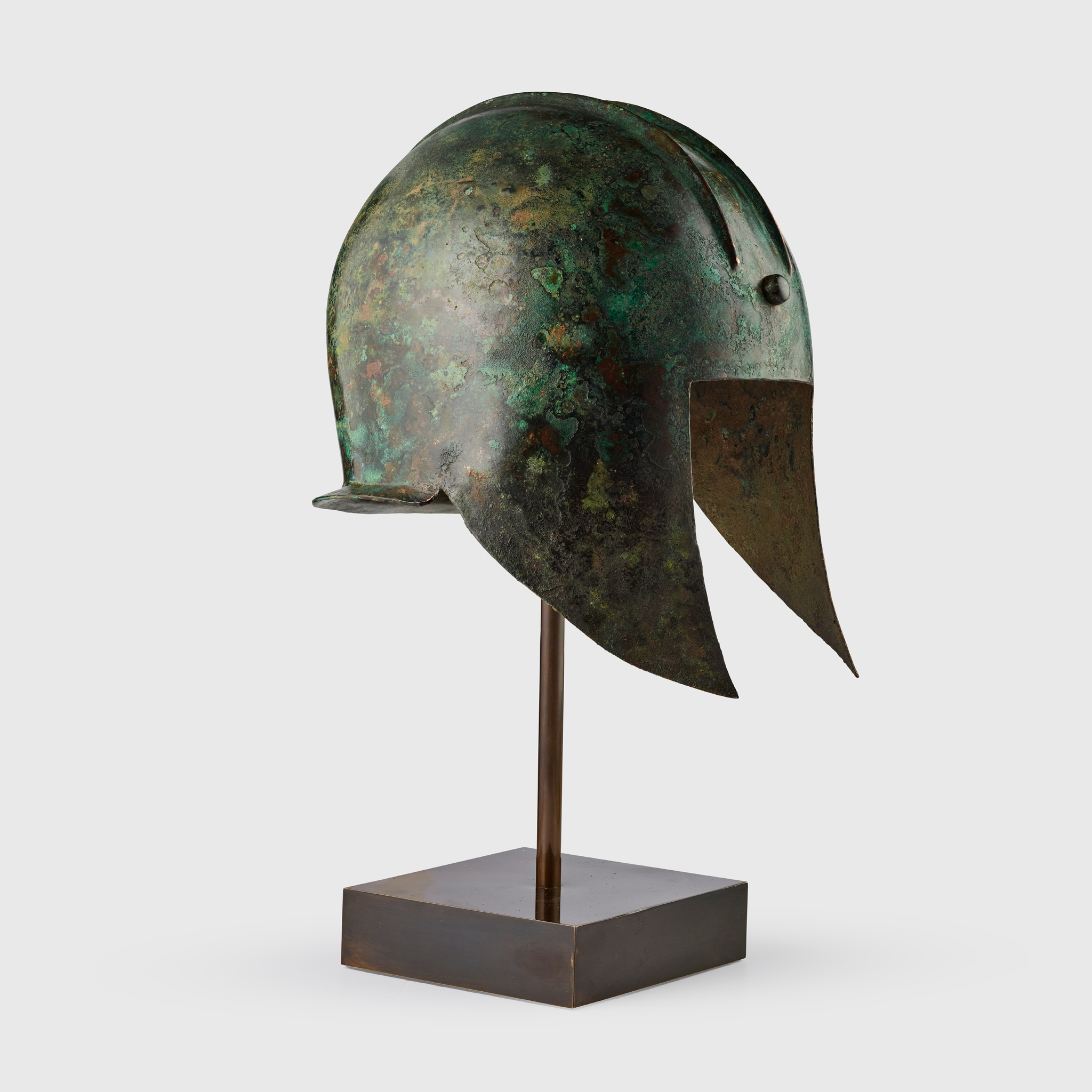ANCIENT GREEK HELMET OF ILLYRIAN TYPE
ARCHAIC PERIOD, C. 600 B.C.
Estimate: £25,000 - £35,000
Auction: 13 March 2025 from 13:00 GMT
Description
hammered bronze, domed helmet with a pair of raised parallel ridges, with long, triangular cheek pieces and flaring neck guard, the borders with punched decoration, rich patina, raised on a bespoke mount
Dimensions
25.5cm tall
Provenance
Private collection, London, United Kingdom, formed 1970s - present, acquired from the below
P.A. Collection, United Kingdom
Footnote
Passed from father to son, helmets were amongst the most prized items of the ancient hoplite. This striking example belongs to the class known as Illyrian. It is distinguished by the open face without a nose guard and parallel ridges running along the top intended for the attachment of a crest.
Though found across the ancient Greek world, it is most commonly encountered in the modern Balkan states which correspond to ancient Illyria. Though the Illyrian tribes adopted it en masse, the first known examples were uncovered much further south on the Peloponnese and date to around 700 B.C. The shape of the Illyrian evolved over time to offer improved neck protection and allow better hearing in battle. Scholars now recognise four subgroups which span from 700 – 400 B.C. The present example is of is of a type possibly developed in the Peloponnese in the 7th century BC and later used in Illyria (northwest of mainland Greece). For a close parallel please see: The Walters Art Museum, Baltimore, accession number 54.2456.

